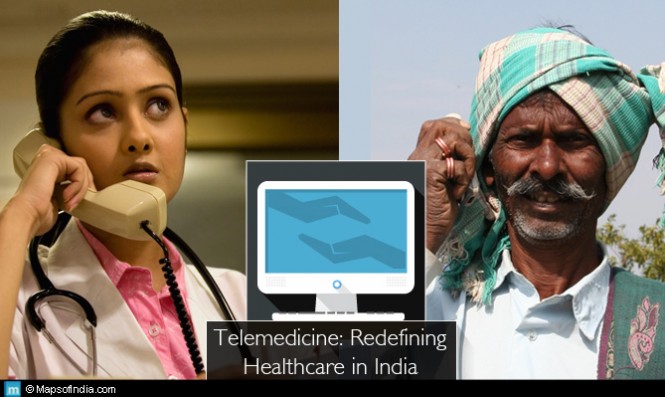 India, with its huge population, is ideal for Telemedicine. It is healthcare consultancy, advice and treatment guidelines through audio, video and data communication. It is not just a helpline, but an extension of doctor-patient appointment.
India, with its huge population, is ideal for Telemedicine. It is healthcare consultancy, advice and treatment guidelines through audio, video and data communication. It is not just a helpline, but an extension of doctor-patient appointment.
The use of telecommunication and technology in order to electronically exchange medical information and provide medical care, even in remote areas, is known as Telemedicine. Information technology plays a major role in this regard by eliminating distance barriers. It ensures an improved access to medical services mostly unavailable to distant rural communities.
The World Health Organization incorporates all aspects of healthcare including preventive care in the domain of Telemedicine. Telehealth is an extension of Telemedicine with a much broader aspect including preventive and curative aspects. It also includes professional health related education and training, public health and health administration.
Telemedicine activities started in India in 1999. Telemedicine can revolutionize the field of health care. High speed satellite, telecommunication link, equal distribution of resources and support of the government can take it to new heights, thereby achieving the ultimate goal of Health for All.
Need For Telemedicine in India
- Huge population with more than 70% people residing in rural areas.
- Inaccessible areas with lack of transportation facilities.
- Unequal distribution of resources.
- Lack of health centers as well as medical practitioners.
Taking Healthcare to Rural Areas
- Poor infrastructure, non-availability of experienced doctors, scarcity of health clinics, and lack of medical awareness – all these factors lead to dismal healthcare scenario in rural and remote areas in India.
- Telemedicine can actually change the face of medical facilities in rural areas by providing the poor and needy with timely and quality treatment.
- It provides proper treatment during emergency.
- Helps to combat the lack of transportation facilities.
- It also provides patient counselling to deal with superstitions and ignorance.
- It guarantees continuous care and support to fight malnutrition, poverty and low-life expectancy.
Telemedicine Usually Includes
- Interactive audio-visual communication (diagnosis, consultation and treatment).
- Physicians using store-and-forward consultations to treat patients.
- Experts can share data and reports for the betterment of the treatment of a patient who is located elsewhere.
- Through store-and-forward technique physicians can even send x-rays or patients’ information to specialists. After review they send back the reports to the local doctors who can treat patients and offer follow-ups.
- Interactive videos allow the patient to directly communicate with the doctor.
Initiatives Taken by Various Organizations and Ministries of Central and State Governments of India
- Department of Information Technology (DIT)
- Ministry of Communications and IT (MCIT)
- Indian Space Research Organisation (ISRO)
- Ministry of Health & Family Welfare
- State Governments of various states of India e.g. governments of Jammu and Kashmir, Himachal Pradesh, Punjab, West Bengal, North Eastern States, Rajasthan, Karnataka, Jharkhand, Kerala, Chhattisgarh and so on.
- Academic Medical Institutions
- Private Hospitals (Apollo Hospitals Group, AIIMS, Asia Heart Foundation, Fortis Hospital, Escorts Heart Institute and Research, Tata Memorial Hospital, Mumbai etc.)
Major Challenges
- Poor data communication infrastructure.
- Increased power-cuts in rural areas and even lack of electricity in remote areas cause major problem.
- Large sections of illiterate population depending on government hospitals.
- Lack of high speed bandwidth in most of the remote areas in India aggravates the problem.
- Cost associated with advanced technology.
Future of Telemedicine in India
- The Government of India is planning and gradually implementing various national level Telemedicine projects throughout the nation to provide better healthcare facilities.
- ISRO plans to expand their telemedicine nodes by launching a dedicated satellite HEALTHSAT for healthcare delivery.
- National Medical College Network Project is being launched to establish National Telemedicine Projects in Medical Colleges (will be treated as Nodes) in India.
- Medical Knowledge Resource Centers (Regional Hub including academic medical institutes) will be connected to the main Nodes.
- Developing School of Telemedicine and Biomedical Informatics is in pipeline for Department of Information Technology.




